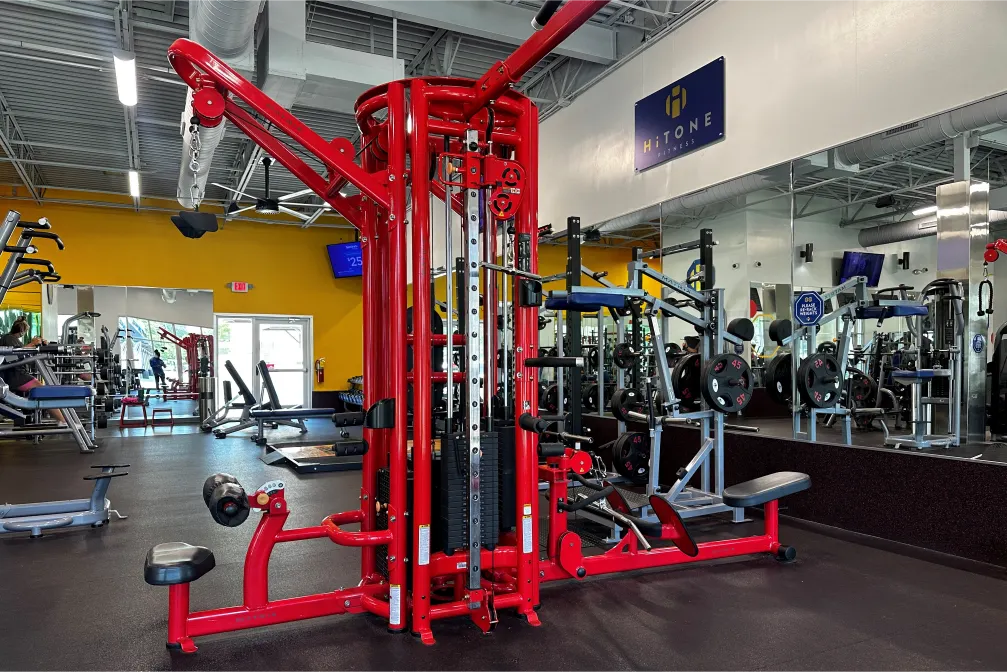Traditionally associated with high-impact movements that can be tough on the joints, HIIT often intimidates those with joint concerns or beginners looking for a gentler approach. However, low-impact HIIT provides an excellent alternative, combining the intensity of traditional HIIT with movements that are easier on the body. This variant not only minimizes the risk of injury but also makes high-intensity workouts accessible to a broader range of people.
Who should consider low-impact HIIT
Low-impact HIIT is ideal for a variety of individuals who want to experience the intensity of HIIT workouts without the stress on their joints. It is particularly beneficial for:
- Seniors: As we age, our joints become less flexible and more susceptible to injury. Low-impact exercises can help maintain fitness without overstressing the body.
- People with joint pain or arthritis: Reducing impact is crucial for those who suffer from joint pain or conditions like arthritis. Low-impact HIIT allows them to stay active and improve their health without exacerbating their symptoms.
- Overweight individuals: High-impact exercises can be challenging and uncomfortable for those who are overweight. Low-impact HIIT provides a feasible option that reduces the strain on their joints while allowing them to burn calories effectively.
- Beginners: Those new to exercise might find low-impact HIIT less daunting, helping them build confidence and stamina as they progress in their fitness journey.
- Post-injury recovery: Individuals recovering from injuries can use low-impact HIIT as a way to reintegrate exercise into their daily routine without risking re-injury.
Top low-impact HIIT exercises
Here are five effective low-impact HIIT exercises that you can incorporate into your workout routine:
- Speed walking or power walking: An excellent cardiovascular exercise that increases your heart rate without the pounding impact of running.
- Swimming or aqua aerobics: Water provides natural resistance and buoyancy, which helps reduce stress on the body while still providing a high-intensity workout.
- Cycling or stationary biking: A superb way to get a heart-pumping workout. You can increase the resistance for short bursts to mimic the high-intensity intervals.
- Elliptical training: This machine offers a smooth motion that mimics running but without the impact, making it ideal for a HIIT workout.
- Rowing: Engages both the upper and lower body, providing a full-body workout that’s low on joint stress but high on cardiovascular benefits.
Workout sample of low-impact HIIT
This is a low-impact HIIT workout based on cycling. This workout structure can be tailored to any low-impact exercise you choose.
- 5-minute warm-up: Begin with dynamic stretching to loosen up your muscles. Continue by cycling at a slow, easy pace to gradually increase your heart rate and prepare your body for the workout.
- Main HIIT Workout:
- Cycle 1: Bike for 3 minutes at a moderate pace where you can talk but not sing. This helps build endurance.
- High-Intensity burst: Followed by 1 minute of faster cycling at high resistance; push hard enough that conversation becomes difficult. This burst maximizes calorie burn and boosts cardiovascular health.
- Rest: Slow down for 1 minute, allowing your heart rate to decrease slightly.
- Repeat this cycle four more times to complete five sets in total.
- 5-minute cool-down: Wind down with a slow, gentle cycle to bring your heart rate back to normal. Finish off with static stretches focusing on your legs, back, and arms to reduce muscle tightness and promote flexibility.
Final thoughts
Low-impact HIIT offers a fantastic alternative for those looking to enjoy the benefits of high-intensity interval training without the stress on their joints. Whether you’re a beginner, recovering from an injury, managing weight, or simply seeking to protect your joints as you age, low-impact HIIT can be tailored to meet your needs while providing substantial health benefits.







